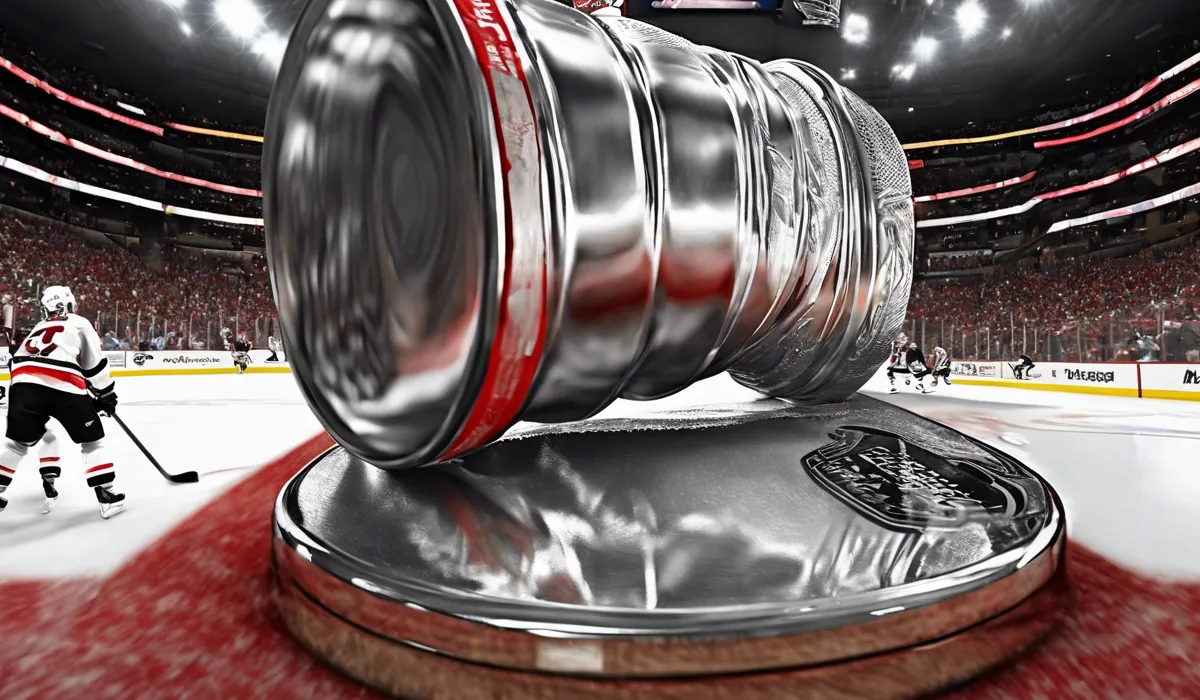Are Stanley Cups Dishwasher Safe? Tips for Longevity & Care
Stanley cups are generally dishwasher safe, particularly on the top rack. Check the product label to confirm as some older models or specific designs may vary. Regular washing preserves the cup’s insulation properties and cleanliness.
Understanding the Stanley Cup and Its Materials

Brief History of the Stanley Cup
The Stanley Cup, often referred to simply as “The Cup,” is an iconic symbol in the world of hockey.
Named after Lord Stanley of Preston, the Governor General of Canada, who donated the cup in 1892, it has been awarded annually to the National Hockey League (NHL) playoff champion.
The Cup has a storied history, traveling around the world and being celebrated by players and fans alike. Its legacy is not only in the sport but also in the memories and traditions it has created over the decades.
Materials Commonly Used in the Manufacturing of Stanley Cups
Traditionally, the actual NHL Stanley Cup is made of a silver and nickel alloy, giving it a shiny and durable finish.
However, when referring to “Stanley cups” in the context of consumer products, we are often discussing the line of insulated drinkware produced by the Stanley brand.
These products, though not related to the NHL trophy, are built for rugged use and are typically made from stainless steel, with vacuum insulation to help maintain the temperature of beverages.
Potential Variations in Materials and Their Relevance to Dishwasher Safety
While stainless steel is a common material for these cups, variations can exist, such as the use of BPA-free plastics, silicone, or different grades of stainless steel.
The type of material used can influence whether a Stanley cup is dishwasher safe.
For instance, stainless steel is generally durable and can handle the high temperatures of a dishwasher, while plastic components might be more prone to damage or warping.
The Dishwasher Safety of Stanley Cups

Examination of the Manufacturer’s Recommendations for Stanley Cups
To ensure the accurate care of Stanley cups, it is crucial to consult the manufacturer’s recommendations.
Generally, these cups are dishwasher safe, especially when placed on the top rack to avoid direct heat from the dishwasher’s elements.
However, it is important to confirm this by checking the product label, as certain models or designs, particularly older ones, may have specific cleaning instructions.
Impact of High Temperatures and Detergents on Different Materials
High temperatures in the dishwasher can affect various materials differently. Stainless steel is quite resistant to heat, but the seal of the insulation might be compromised over time.
Detergents can also have a corrosive effect, particularly on any decorative elements or painted surfaces, which might lead to fading or peeling.
Plastic elements, if present, are susceptible to deformation or melting in high-heat scenarios.
Common Issues Associated with Placing Stanley Cups in the Dishwasher
Issues that may arise from dishwasher use include the deterioration of the cup’s vacuum seal, which is integral to its insulation properties.
Additionally, the harsh environment of a dishwasher can cause scratches or other cosmetic damage.
Over time, the repetitive cycle of washing might lead to a breakdown of the materials, potentially leading to leaks or a reduced ability to maintain temperatures.
Caring for Your Stanley Cup

Best Practices for Manually Washing Stanley Cups
Manual washing is often the safest way to clean your Stanley cup. Use warm, soapy water and a soft sponge or cloth to gently clean both the interior and exterior.
Rinse thoroughly with clean water and air dry or towel dry to prevent water spots. This method helps preserve the integrity of the cup’s construction and is especially recommended for older or more delicate models.
Tips for Maintaining the Longevity and Appearance of Stanley Cups
To maintain the lifespan and appearance of your Stanley cup, avoid using abrasive cleaners or tools that can scratch the surface.
If your cup has a painted finish or decals, hand washing can help preserve these elements.
Store the cup in a cool, dry place and ensure it’s completely dry before putting it away to avoid mold or mildew growth.
Alternatives to Dishwasher Cleaning for Various Types of Stanley Cups
For those who prefer not to use a dishwasher or have a Stanley cup that is not dishwasher safe, alternatives include using a bottle brush for thorough cleaning inside the cup or soaking in a vinegar solution to help remove stains and odors.
For on-the-go cleaning, consider carrying biodegradable wipes or a small bottle of dish soap.
FAQs About Stanley Cups Dishwasher Safety
Are Stanley cups safe to put in the dishwasher?
No, Stanley cups are not recommended to be put in the dishwasher as it can damage their insulation and finish. Hand wash is preferred.
Can I place my Stanley cup on the bottom rack of the dishwasher?
No, it’s generally not recommended to place your Stanley cup on the bottom rack of the dishwasher. The bottom rack exposes items to higher heat and more intense water pressure, which can damage the insulation and finish of the cup. Hand washing is preferred for Stanley cups.
Should I check the label before washing my Stanley cup in the dishwasher?
Yes, you should check the label or manufacturer’s instructions before washing your Stanley cup in the dishwasher.
Do older Stanley cup models have different dishwasher safety guidelines?
Yes, older Stanley cup models may have different dishwasher safety guidelines. Always refer to the specific instructions for your model.
Why is it important to regularly wash my Stanley cup in the dishwasher?
While it’s generally not recommended to wash Stanley cups in the dishwasher, regularly washing your Stanley cup is important for hygiene. Proper cleaning prevents the buildup of bacteria, mold, and odors, ensuring safe and enjoyable use. If dishwasher use is not advised, hand wash your cup thoroughly with soap and water.
Final Thoughts
Stanley cups are designed to be dishwasher safe, typically suitable for placement on the top rack.
It’s essential to verify this by checking the product label, as some variations might exist with older versions or unique designs.
Regularly dishwashing these cups helps maintain their insulating qualities and ensures they remain hygienic for continued use.





